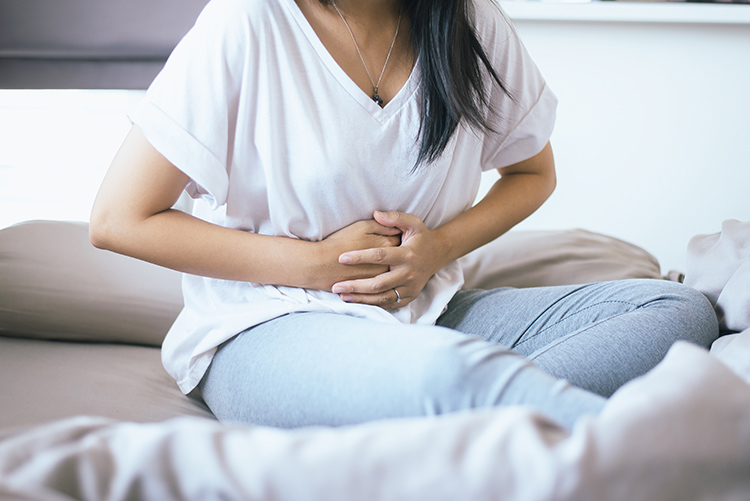East Melbourne VIC 3002
Fibroids vs Polyps: Understanding The Difference

Both fibroids and polyps are lumps involving the uterus. Fibroids can be located literally anywhere within the uterus. Polyps are almost always combined to the superficial glandular tissue that makes up the lining of the uterus called the endometrium, or the canal of the cervix, or can rarely involve the vagina itself.
Sometimes, especially when fibroids are small and occupy the cavity of the uterus, it is difficult to differentiate between a small fibroid and a small polyp. They are both often cherry sized, red lesions associated with bleeding. It is important to be aware of the difference as although both lesions are unlikely to be precancerous or cancerous, it is more common for polyps to have this abnormality.
Fibroids are the commonest lump in the female pelvis.
They arise from the muscle cells and cells called fibroblasts which form the fibrous tissue within the uterus. Fibroids can be anywhere in size between a few millimetres or can be as large as 15 cm or more in diameter.
Fibroids are usually classified according to both their size and their position within the uterus. The following sites are possible:
- Subserosal (occupying the muscle of the uterus but protruding to the outside of the uterus)
- Intramural (which means solely within the muscle layer of the uterus)
- Submucosal (partially or wholly within the cavity of the uterus)
- Cervical (arising from part of the cervix or lower part of the uterus)
- Broad ligament (occupying the lateral tissues of the uterus)
- Pedunculated (on the outside of the uterus but attached to the uterus by a stalk)
The exact cause of fibroids is unknown. However, we do know that fibroids are more common in women of reproductive age as they get older. There is a racial component, with black women having a significantly higher risk compared to Caucasian women, and Asian women having the lowest incidence of fibroids.
Additionally, fibroids are more common in women who have had children or started taking oral contraceptives early in life. Fibroids require estrogen hormone to grow, so they tend to shrink after menopause when estrogen levels decrease, and they are not usually present in pre-pubertal girls.
There is also a relationship between the incidence of fibroids and increasing body mass index (BMI). Dietary factors, such as red meat consumption, vitamin D deficiency, and high alcohol intake, may also impact the risk of fibroids. However, there is no association between smoking and fibroids. Some studies suggest a familial predisposition, indicating a possible genetic component in the incidence of fibroids.

Fibroids particularly small fibroids may be totally asymptomatic, that is you may not notice any symptoms whatsoever. They may present as an unexpected finding on a routine ultrasound such as an ultrasound in pregnancy.
The commonest symptoms of fibroids are heavy menstrual bleeding often associated with the passage of clots or flooding. Fibroids that are located within the cavity (submucosal fibroids) especially can be associated with spotting mid-cycle or even postmenopausal bleeding. Heavy bleeding is especially associated with:
- Multiple fibroids
- Large fibroids (especially those over 5-6 cm)
- Fibroids involving the uterine cavity (submucosal fibroids)
- Large fibroids can press on surrounding organs such as the bowel or the bladder with resultant symptoms
- Large fibroids may also be associated with pressure symptoms or back pain
Heavy menstrual bleeding with the passage of clots may be associated with cramping uterine pain. Fibroids are usually not painful, the one exception being during pregnancy where under the influence of the hormones produced by the placenta, the fibroid may outgrow its blood supply and start to undergo degeneration or the death of cells. This is often associated with bleeding into the fibroid and is called red degeneration. It is not in any way dangerous to the foetus but women may require significant pain relief.
Fibroids may also be associated with infertility issues especially if they are located adjacent to the fallopian tubes. Submucosal fibroids may also interfere with implantation of a pregnancy into the lining of the uterus.
Polyps are caused by an overgrowth of glandular tissue. Many organs contain glandular tissue including the lining of the uterus and the lining of the canal of the cervix.
Polyps may also therefore be found in the digestive tract, particularly the large bowel, the nasal cavity and less commonly the vagina itself where the polyps are often on a stalk.
Endometrial polyps are due to glandular overgrowth in the uterine cavity, often with visible blood vessels. They can vary in size and are common in women of reproductive and postmenopausal age. While their cause is unknown, breast cancer drugs, estrogen and progesterone hormones, obesity, menopausal hormone therapy, and genetic syndromes may be associated with their development.
Polyps can occur in women of any age after puberty and some may experience recurrent or multiple polyps. They often vary in size from just a couple of millimetres to being 2-3 cm in size or even larger.

Polyps may be totally asymptomatic and found as a coincidental finding on ultrasound. Often women who are on particular anti-oestrogen drugs as part of their treatment for breast cancer have yearly ultrasounds because of the association between these drugs and polyps or thickening of the uterine lining. The commonest medication used in breast cancer that is associated with the development of polyps is a drug called tamoxifen. The common symptoms are:
- Heavy menstrual bleeding – especially if the polyps are multiple and/or large
- Intermenstrual bleeding – usually spotting at odd times during the menstrual cycle as the polyp bleeding
- Infertility – polyps can act as an IUCD and interfere with implantation
- Malignancy – polyps can be precancerous or cancerous. This is especially the case in women who have abnormal bleeding and the incidence of malignancy is three times higher in postmenopausal women. The actual incidence of malignancy in a polyp is 3-4%
Although fibroids and polyps are both lumps involving the uterus or cervix primarily, they are different in their causes and often their size and position. They also have different clinical significance, especially as fibroids can achieve a much larger size and tend to be more solid growths.
Fibroids are often diagnosed on clinical examination or suspected because of classical symptoms. The ultimate diagnosis relies on ultrasound where both the position, size and any compression of surrounding organs can be visualised.
Polyps are also often suspected because of classical symptoms and are again usually diagnosed on ultrasound and are invariably located within the endometrial cavity.

Treatment for fibroids depends on their size, symptoms, and location. Small fibroids that do not cause significant symptoms can be monitored with yearly ultrasounds.
Fibroids associated with heavy bleeding or compression symptoms may require surgical treatment, such as a myomectomy (fibroid removal) or hysterectomy (removal of the uterus). Conservative treatments like medications, microwaving fibroids, or embolisation (blocking blood supply to the fibroid) have limited success and usually only decrease the size of the fibroid without removing it completely.
Cancerous fibroids are known as sarcomas. Malignant fibroids can be difficult to diagnose, but if you experiencing the following symptoms then there could be reason for concern:
- Rapid growth on ultrasounds
- Significant pain
- Recurrent abnormal bleeding (especially postmenopausal bleeding)
- Suspicious features on imaging
- Extensive blood supply may raise concern
Polyps, which are usually small and may not require treatment, can be removed if they cause abnormal bleeding or grow in size. In premenopausal women, ovaries are usually not removed during hysterectomy or myomectomy, so hormonal status remains unchanged.
However, in the presence of abnormal bleeding a polyp of significant size, especially over 10 mm in diameter or if it is growing on serial ultrasound, it can be removed using a hysteroscope (telescope) under general anesthesia, along with specially designed instruments. The removed polyp is sent for pathological examination. This would also apply in cases of fibroid or hysterectomy.
Both fibroids and endometrial polyps are the commonest lumps found within the female genital tract. Appropriate management (which is usually surgical) will be necessary. Associate Professor Len Kliman has been managing, diagnosing and treating women with fibroids and endometrial polyps for over 35 years.








